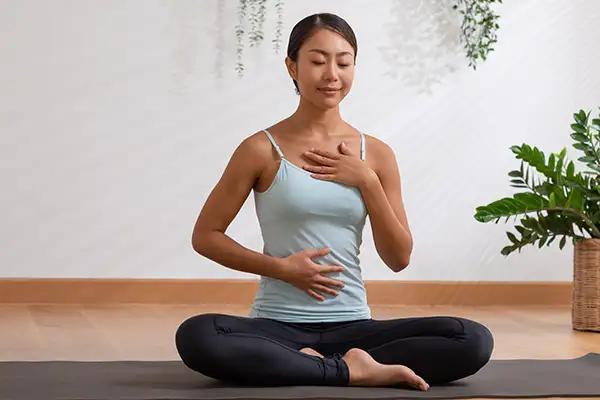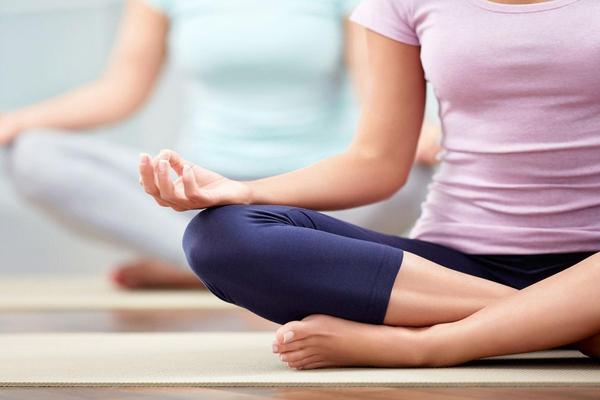10 Grounding Techniques to Overcome Anxiety Attacks

If you’ve ever experienced the wave of overwhelming fear and discomfort that an anxiety attack can bring, you know it’s not something you want to go through again. Thankfully, there are ways to help manage these moments of distress. Grounding techniques, which help you reconnect to the present moment, can be a real lifesaver. So, let’s dive in and explore 10 simple but effective methods you can use to keep your anxiety in check.
1. Mindful Breathing
Start by focusing on your breath. Inhale slowly, counting to four as you do so. Hold your breath for a count of four, then exhale to the count of four. This method of controlled breathing can help you to focus your mind on the present moment and away from the triggers of your anxiety. It is one of the techniques often recommended in comprehensive guides to managing anxiety, like the one covered in this insightful overthrowing anxiety review.
2. Sensory Awareness
Another grounding method is to focus on your senses. Describe what you see, hear, feel, taste, and smell. This technique will help you stay connected with your physical surroundings and distract you from your anxious thoughts.

3. The 5-4-3-2-1 Technique
This method is a bit of an extension of sensory awareness. It involves identifying five things you can see, four things you can touch, three things you can hear, two things you can smell, and one thing you can taste. Like sensory awareness, this method helps divert your mind from anxiety triggers.

4. Mindful Movement
Performing simple movements like tapping your fingers, bouncing your leg, or rolling your shoulders can help you regain focus. It’s all about reconnecting with your body and the present moment.

5. Grounding Phrases
Repeating a comforting phrase or mantra can serve as an anchor in times of anxiety. The phrase should be personal and positive, something like “I am safe” or “This too shall pass.”
6. Visualization
Visualizing a peaceful place or a happy memory can help calm your mind. Try to involve all your senses in the visualization to make it more real and effective.
7. Progressive Muscle Relaxation
Progressive muscle relaxation involves tensing and then relaxing different muscle groups in your body. This technique can provide a much-needed distraction from anxious thoughts.
8. Guided Imagery
Guided imagery is like a directed daydream. You can use apps, online resources, or even books for this purpose. They guide you through a calming scenario to help soothe your mind.
9. Grounding Objects
Keeping a small object in your pocket can serve as a grounding tool. When you’re feeling anxious, you can touch and describe the object to help refocus your thoughts.
10. Mindful Eating
Eating slowly and focusing on the taste, texture, and smell of your food can also ground you in the present. It’s a simple act, but it can be quite effective.
Remember, it’s all about finding what works for you. Some methods might be more effective than others, and it’s okay to try different things. Anxiety management is a personal journey, so what works for one person might not necessarily work for you.
However, it’s not just about managing anxiety. It’s about living a healthier lifestyle. And part of that includes maintaining a balanced diet. For those interested, you can check out these 7 summer smoothie recipes for rapid weight loss.
Another important aspect is to keep your body moving. While some may prefer hitting the gym, others might prefer calmer activities. Yoga, for example, is a great way to relax and unwind. So, you might want to explore these 7 comfortable outfits for stretching and yoga.
Anxiety can be a burden, but remember that you’re not alone. There are many resources and strategies available to help manage your symptoms. Stay strong, and don’t hesitate to reach out for help when needed.
The Role of Physical Activity in Managing Anxiety
Physical activity is a potent stress-reliever and anxiety-buster. When you’re physically active, your body releases endorphins, which are known as ‘feel-good’ hormones. They help elevate your mood, providing a natural high that can distract from negative thoughts or worries.

Additionally, focusing on the physical activity you’re engaged in—be it running, swimming, yoga, or even a brisk walk—can serve as a form of grounding. By being present and attentive to your physical sensations, you can divert your mind from the mental chatter that may trigger anxiety.
Physical activities can also serve as a confidence booster. When you set goals and achieve them, it brings a sense of accomplishment and self-efficacy, which can enhance your overall mental wellbeing.
Understanding Your Anxiety Triggers
Managing anxiety also involves understanding your anxiety triggers. Triggers are specific cues that can set off your anxiety. They can be anything from certain situations or places to specific thoughts or feelings. Identifying these triggers can be a powerful step in managing your anxiety.
One way to identify triggers is by keeping a journal. Record your thoughts, feelings, and behaviors before, during, and after an anxiety attack. Over time, you might start to notice patterns that can help you identify your triggers. By knowing your triggers, you can work on strategies to cope with them or try to minimize their impact.

Building a Support System
Dealing with anxiety can feel isolating, but remember, you don’t have to face it alone. Building a support system can make a huge difference. This can be in the form of understanding friends or family, a mental health professional, or even a support group.
Communicating your experiences and feelings with someone who’s supportive and nonjudgmental can provide a sense of relief. Plus, they can offer a different perspective, reassurance, and even practical advice or help. Remember, it’s okay to ask for help, and it’s okay to lean on others when you need to.








